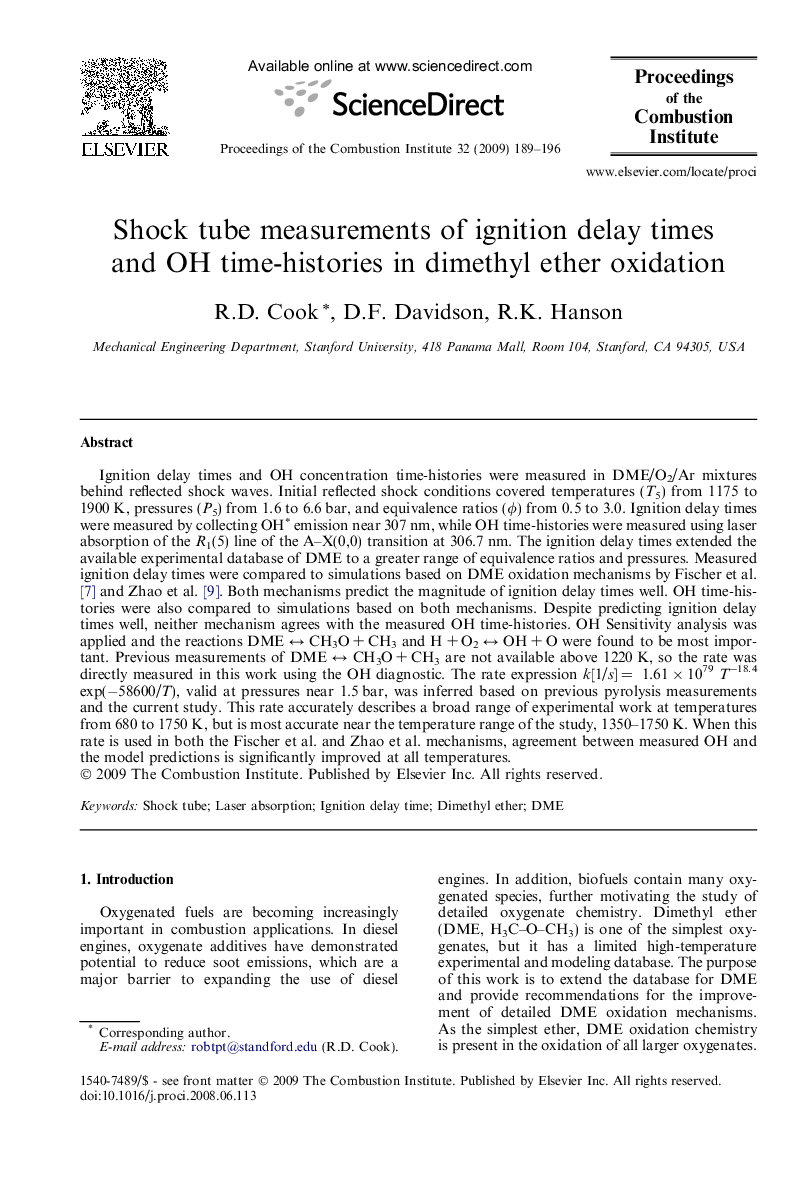| Article ID | Journal | Published Year | Pages | File Type |
|---|---|---|---|---|
| 6679404 | Proceedings of the Combustion Institute | 2009 | 8 Pages |
Abstract
Ignition delay times and OH concentration time-histories were measured in DME/O2/Ar mixtures behind reflected shock waves. Initial reflected shock conditions covered temperatures (T5) from 1175 to 1900Â K, pressures (P5) from 1.6 to 6.6Â bar, and equivalence ratios (Ï) from 0.5 to 3.0. Ignition delay times were measured by collecting OHâ emission near 307Â nm, while OH time-histories were measured using laser absorption of the R1(5) line of the A-X(0,0) transition at 306.7Â nm. The ignition delay times extended the available experimental database of DME to a greater range of equivalence ratios and pressures. Measured ignition delay times were compared to simulations based on DME oxidation mechanisms by Fischer et al. [7] and Zhao et al. [9]. Both mechanisms predict the magnitude of ignition delay times well. OH time-histories were also compared to simulations based on both mechanisms. Despite predicting ignition delay times well, neither mechanism agrees with the measured OH time-histories. OH Sensitivity analysis was applied and the reactions DME â CH3OÂ +Â CH3 and HÂ +Â O2 â OHÂ +Â O were found to be most important. Previous measurements of DME â CH3OÂ +Â CH3 are not available above 1220Â K, so the rate was directly measured in this work using the OH diagnostic. The rate expression k[1/s]Â =Â 1.61Â ÃÂ 1079Tâ18.4 exp(â58600/T), valid at pressures near 1.5Â bar, was inferred based on previous pyrolysis measurements and the current study. This rate accurately describes a broad range of experimental work at temperatures from 680 to 1750Â K, but is most accurate near the temperature range of the study, 1350-1750Â K. When this rate is used in both the Fischer et al. and Zhao et al. mechanisms, agreement between measured OH and the model predictions is significantly improved at all temperatures.
Related Topics
Physical Sciences and Engineering
Chemical Engineering
Chemical Engineering (General)
Authors
R.D. Cook, D.F. Davidson, R.K. Hanson,
